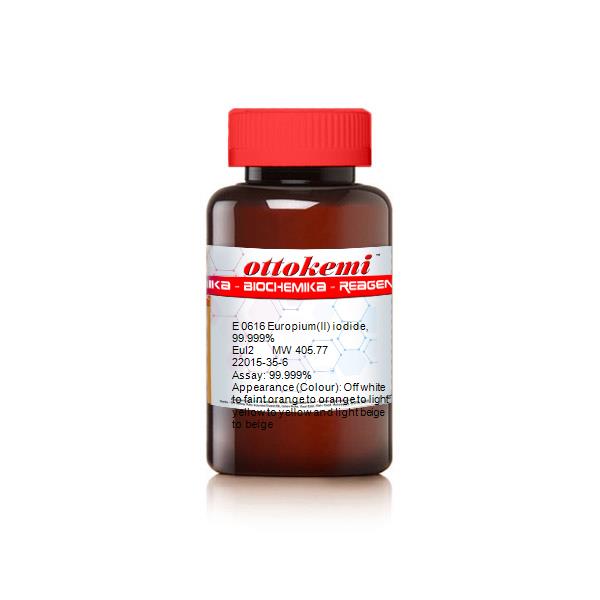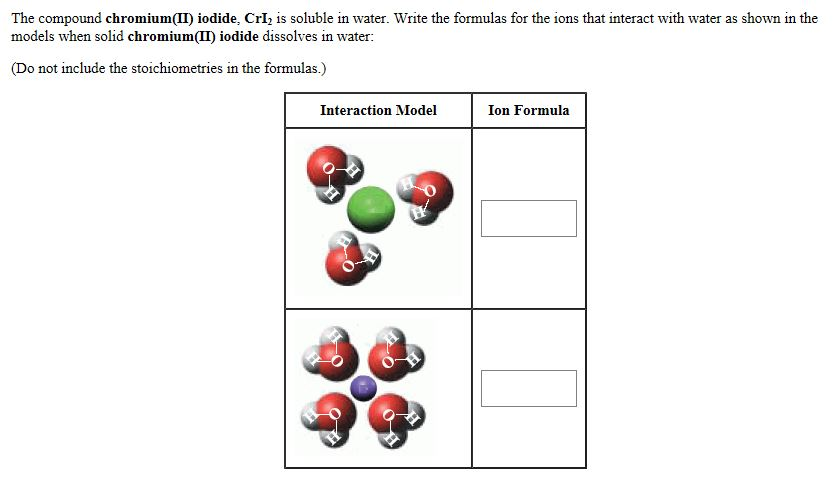

One industry that contributes a large amount of chromium pollution is the ferrochrome industry. When disposed of in landfills, toxic chromium seeps from the soil into the water. Most of the chromium pollution in the environment is the result of waste from human activities such as mining and leather tanning. It is also insoluble whereas hexavalent chromium is soluble. As previously mentioned, trivalent chromium is less toxic than hexavalent. The two stable forms found in the environment are trivalent and hexavalent chromium. Like with humans, chromium is also toxic for microorganisms, plants, and animals. One major consequence of this is that it may lead to kidney and liver failure. Ultimately, this leads to in vitro hemolysis, which is the rupturing of red blood cells.
#Chromium ii iodide series
The way this happens is chromium(VI) enters the bloodstream and begins to create a series of oxidization reactions. For example, earlier in this article, it was mentioned that hexavalent chromium can destroy red blood cells.
#Chromium ii iodide skin
These include skin rashes, weakened immune systems, altered genetic material, lung cancer, and even death.Īs previously stated, the toxicity comes from the high oxidizing power. However, hexavalent chromium or chromium (VI) is extremely toxic and causes a wide variety of adverse health effects. Lack of exposure to it can cause disturbances in biological processes such as metabolism and lead to health problems such as diabetes. For example, trivalent chromium, which has a +3 oxidation state, is an essential nutrient for humans. However, as the oxidation state increases, so does the health risks associated with it. Chromium in Today’s World Human Health and ChromiumĬhromium metal alone exists at low toxicity. Chrome plating is also commonly used in automotive parts. Common household items that are manufactured with chrome plating are doorknobs, bathroom taps, and lighting fixtures. The result is a thin layer of chromium being left on top of either a metal or alloy substrate. It is accomplished by passing an electric current between two electrodes immersed in an electrolyte bath with chromic acid. Chromium is a great choice for plating as it is lustrous, hard, and naturally resistant to tarnishing and corrosion. Electroplating with ChromiumĮlectroplating, also known as electrodeposition, is the process of plating one metal onto another to prevent corrosion or enhance the appearance. Naturally occurring chromium is a mix of four isotopes. It is the first element in the periodic table to violate the Aufbau principle. Chromium chemistry has some things in common with vanadium, manganese and molybdenum.Ĭhromium’s electron configuration is 3d 5 4s 1. It is the first element of group 6, along with molybdenum and tungsten. It lies to the left of manganese and the right of vanadium on the periodic table.

Chromium is named after the Greek word ‘chroma’ or ‘chromos’ which translates to ‘color’ and references the element’s ability to compose colorful compounds.Find out more about this radiant transition metal down below! Interesting Facts about Chromium! Moreover, it has a rich chemistry and is well known for creating colorful compounds and is often used to both protect and polish other metals through a process called electroplating.

The element chromium (Cr) can be found in group 6 on the periodic table.


 0 kommentar(er)
0 kommentar(er)
